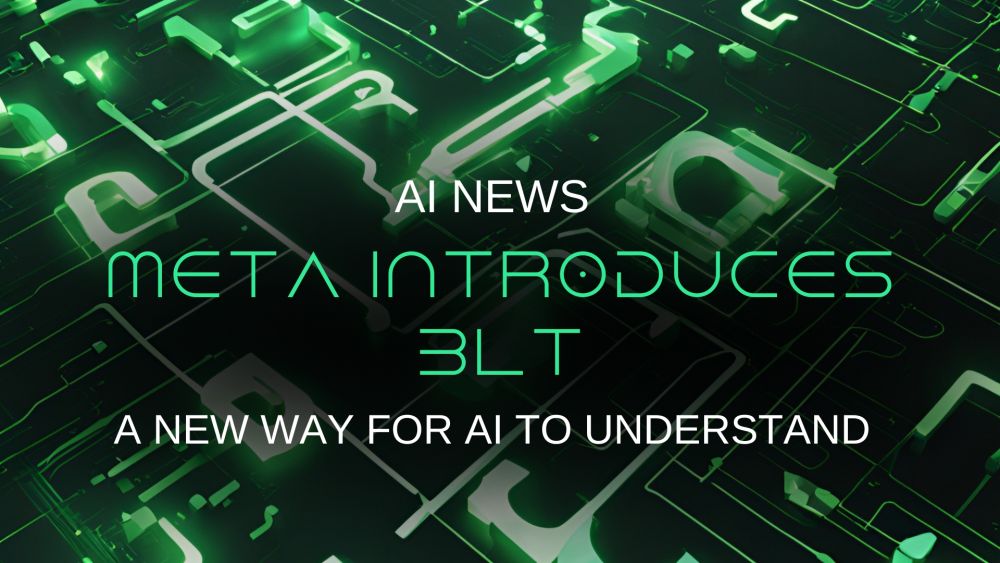Meta Introduces BLT: A New Way for AI to Understand Language
Imagine teaching a computer to read. Normally, we break down sentences into individual words, like giving the computer building blocks. Meta, the company behind Facebook and Instagram, has come up with a brand new way to do this, and it's called the Byte Latent Transformer, or BLT for short.
Think of it this way: instead of chopping words into blocks, BLT looks at language at a much more basic level, like the individual letters and symbols. This might sound complicated, but it actually opens up some exciting possibilities for how AI understands and works with language.
Here's a breakdown of why this is a big deal:
What Makes BLT Different and Why It Matters:
- No More "Word Chops": The biggest change is that BLT doesn't need to break down words into separate pieces (what experts call "tokenization"). It understands language directly from the raw characters.
- Better with Many Languages: Because BLT doesn't rely on special rules for each language to chop up words, it could become much easier to build AI that understands and works with many different languages more smoothly and fairly.
- Potentially Faster and More Efficient: By working directly with the basic building blocks of language, BLT might be able to do its job faster and use less computing power.
How This Could Change the AI World:
- AI That Adapts to Anything: Since BLT can handle raw characters, it could lead to AI systems that are more flexible and can work with all sorts of data, not just written text. Imagine AI that can understand both spoken words and handwritten notes more easily!
- Supercharged Translations: Think about how much better online translators could become. BLT's approach could lead to more accurate and natural-sounding translations between different languages.
- Smarter Content Filtering: Online platforms use AI to find and remove harmful content. BLT could help these systems understand the nuances of language better, making them more effective at keeping online spaces safe.
- Finding Information Across Languages: Imagine searching for information online and getting results in different languages that you can actually understand without any hassle. BLT could make this a reality.
What This Means for Meta and the Future of AI:
- Meta Leading the Way: Developing BLT shows that Meta is serious about being a leader in AI research and finding new and better ways for computers to understand language.
- Setting New Standards: This new technology could become a new standard in the AI world, influencing how other companies and researchers build language models.
- More Innovation to Come: BLT's unique approach could inspire even more creative ideas and breakthroughs in how we build AI that understands and interacts with human language.
Meta's BLT is a significant leap forward in the world of AI. By getting rid of the need to chop words into pieces, BLT opens up a whole new world of possibilities for creating smarter, more efficient, and more inclusive AI systems that can understand and work with language in a much more natural way. It's a development that could have a big impact on how we use and interact with AI in the years to come.





